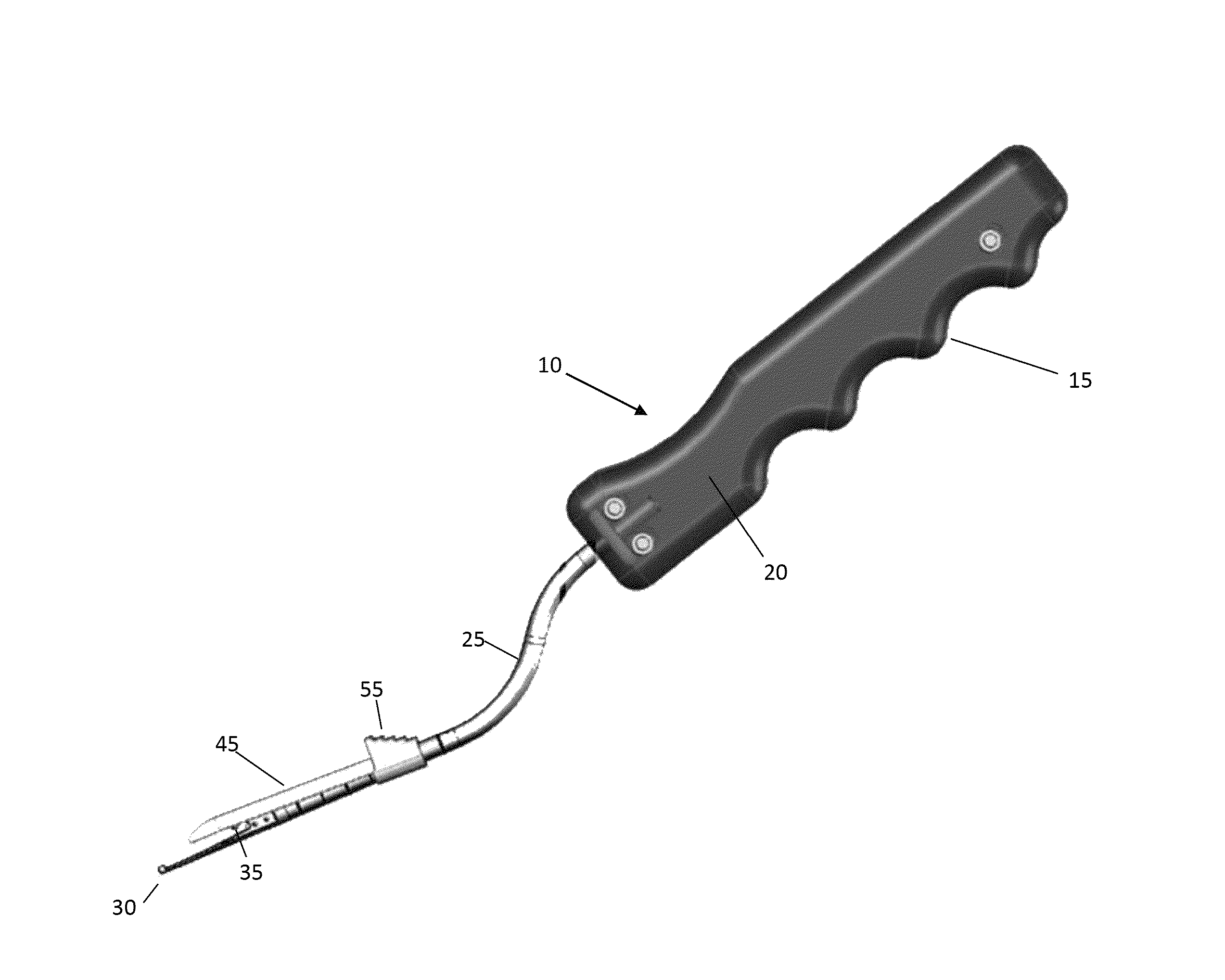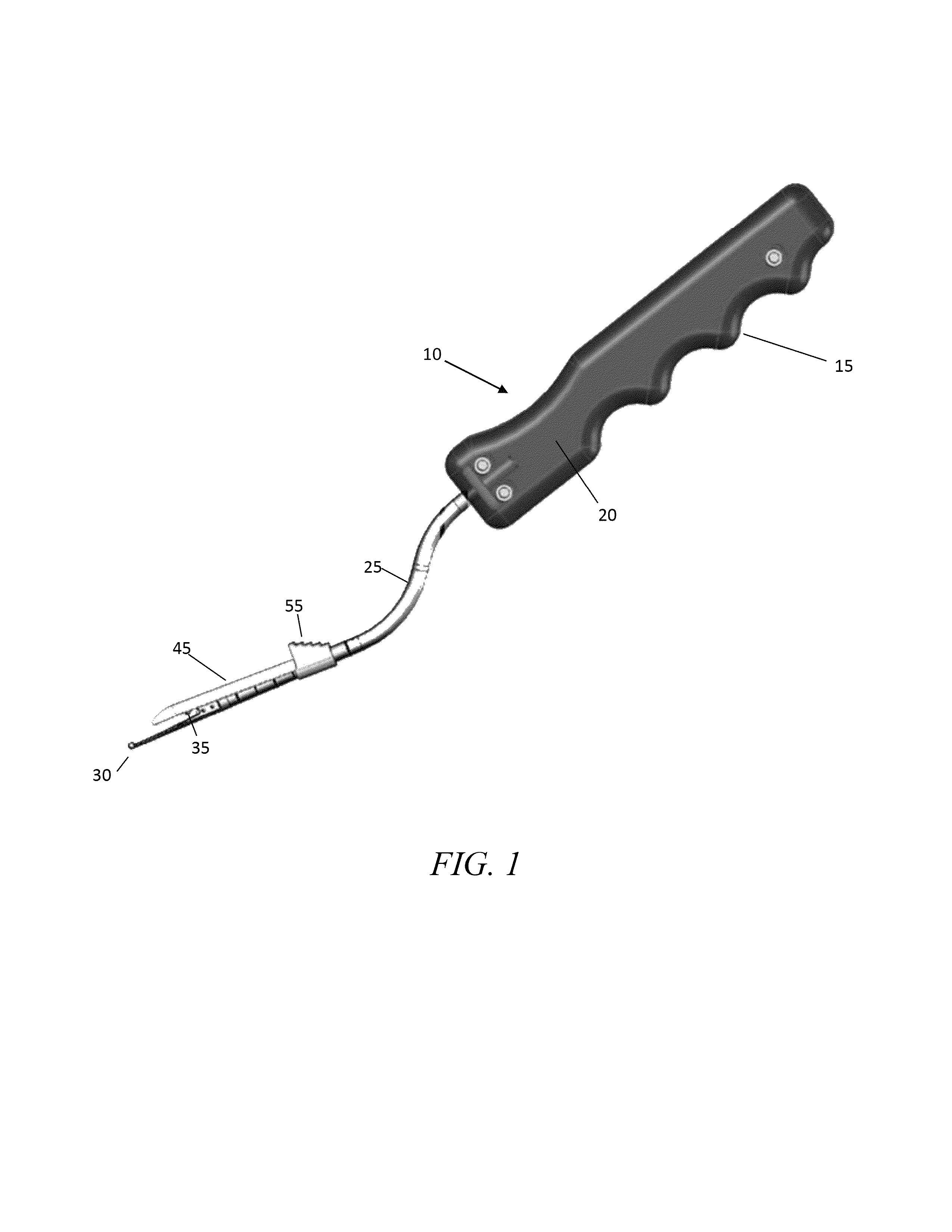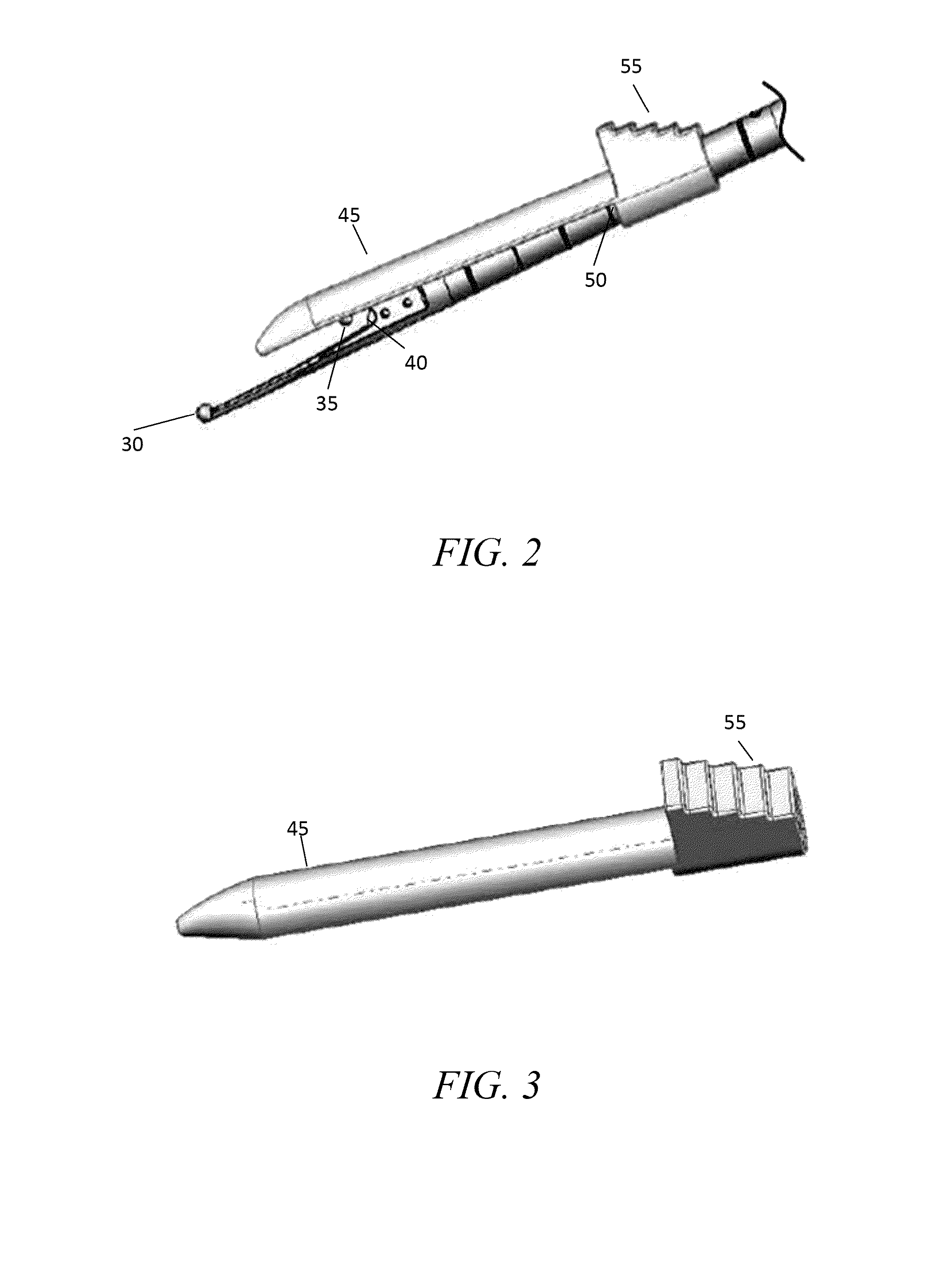Method for minimally invasive tendon sheath release using device with hemi-cannula
a technology of hemi-cannula and tendon, which is applied in the field of devices and methods for releasing the tendon sheath, can solve the problems of causing pain, causing the tendon to swell, and causing the nodule to form, and achieves the effects of less surrounding tissue, less surrounding tissue dissection, and less pulling
- Summary
- Abstract
- Description
- Claims
- Application Information
AI Technical Summary
Benefits of technology
Problems solved by technology
Method used
Image
Examples
Embodiment Construction
[0038]In the following detailed description of the preferred embodiments, reference is made to the accompanying drawings, which form a part hereof, and within which are shown by way of illustration specific embodiments by which the invention may be practiced. It is to be understood that other embodiments by which the invention may be practiced. It is to be understood that other embodiments may be utilized and structural changes may be made without departing from the scope of the invention.
[0039]Generally, device 10 is comprised of handle 15, cavity 20, sheath 25, guide probe 30, dorsal outrigger guide probe 35, cutting blade 40 and hemi-cannula 45. Handle 15, as shown in FIGS. 1, 5, 8, 9, 12-15, and 17, includes a knurled rigid structure having dimensions of about 2.0 cm diameter and about 7.0 cm in length. Handle may be constructed of a rigid material including, but not limited to, a plastic, thermoplastic, acrylic, or metal. Handle 15 may be constructed of any shape but is prefera...
PUM
 Login to View More
Login to View More Abstract
Description
Claims
Application Information
 Login to View More
Login to View More - R&D
- Intellectual Property
- Life Sciences
- Materials
- Tech Scout
- Unparalleled Data Quality
- Higher Quality Content
- 60% Fewer Hallucinations
Browse by: Latest US Patents, China's latest patents, Technical Efficacy Thesaurus, Application Domain, Technology Topic, Popular Technical Reports.
© 2025 PatSnap. All rights reserved.Legal|Privacy policy|Modern Slavery Act Transparency Statement|Sitemap|About US| Contact US: help@patsnap.com



